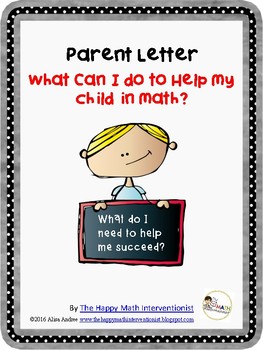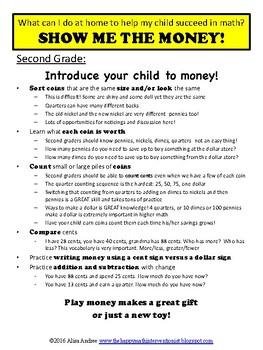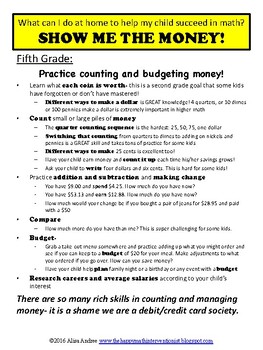Parent Letters K-5 for "How do I help my student in math?"
The Happy Math Interventionist
139 Followers
Grade Levels
K - 5th
Subjects
Resource Type
Standards
CCSSK.CC.A.1
CCSSK.CC.A.2
CCSS2.MD.C.8
CCSS1.NBT.A.1
CCSS1.NBT.B.3
Formats Included
- PDF
Pages
8 pages
The Happy Math Interventionist
139 Followers
Description
So many parents ask the question, "How can I help my child at home in math?" Conference time is a big one where this question often comes up. This resource includes 6 parent letters specific for the CCSS in kindergarten, first, second, third, fourth and fifth. All parent letters are on the same idea- MONEY! If parents would have younger children naming, sorting, counting and skip counting coins, the world would be a better place. And if all upper el parents would have students working with money- counting, adding, subtracting, budgeting, planning, making change and comparing with money, kids would be in a much better place mathematically! Parents may not know how we teach different things these days but there are very few parents who do not understand money. This is a fun way to help kids with many skills at home and parents can't mess it up! Give these letters out at conferences or any time of the year. Tons of easy to understand ideas on these simple hand-outs for parents who want to help their children with math at home!
Total Pages
8 pages
Answer Key
N/A
Teaching Duration
N/A
Report this resource to TPT
Reported resources will be reviewed by our team. Report this resource to let us know if this resource violates TPT’s content guidelines.
Standards
to see state-specific standards (only available in the US).
CCSSK.CC.A.1
Count to 100 by ones and by tens.
CCSSK.CC.A.2
Count forward beginning from a given number within the known sequence (instead of having to begin at 1).
CCSS2.MD.C.8
Solve word problems involving dollar bills, quarters, dimes, nickels, and pennies, using $ and ¢ symbols appropriately. Example: If you have 2 dimes and 3 pennies, how many cents do you have?
CCSS1.NBT.A.1
Count to 120, starting at any number less than 120. In this range, read and write numerals and represent a number of objects with a written numeral.
CCSS1.NBT.B.3
Compare two two-digit numbers based on meanings of the tens and ones digits, recording the results of comparisons with the symbols >, =, and <.





